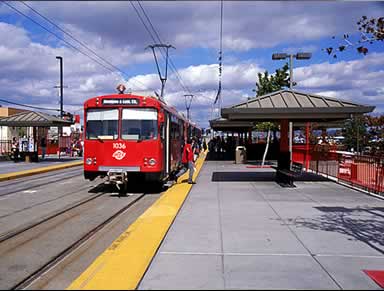The San Diego Association of Governments has proposed a hybrid approach to SB 375 compliance, combining land use changes with steps to reduce demand for automobile travel.

In an effort to combat global warming, SB 375 requires regional planning organizations to develop a “Sustainable Communities Strategy,” or SCS, that meets greenhouse gas reduction targets. SB 375 provides modest incentives – like CEQA-streamlining and transportation spending – for local governments to incorporate the SCS into their own land use plans, but does not require it.
On May 28, 2010, the SANDAG Board endorsed a hybrid approach for its SCS, combining pricing mechanisms to reduce auto use (for example, toll charges for some freeway lanes and higher parking charges), assumptions for increased use of home offices and van pools, as well as land use changes. For the land use component, the SCS will incorporate a previously developed “Smart Growth Concept Map” which, though transit-oriented development, supports a long-range plan to fundamentally shift growth into a higher density, urban-centered pattern by 2050. Thus, the SB 375 incentives should encourage local governments to transition their land use plans to the long-range regional plan. While SANDAG staff had proposed an SCS land use scenario that went beyond the Smart Growth Concept Map in terms of more intensified land use, the SANDAG Board declined to go that far.
SANDAG also submitted draft greenhouse reduction targets to the California Air Resources Board (CARB) for both 2020 and 2035, which CARB staff has recommended accepting. Once the CARB board finalizes the targets, SANDAG will finalize the SCS.
SANDAG’s hybrid approach reflects the inherent nature of SB 375, which is a voluntary program that can be implemented through a variety of means rather than a direct mandate to alter growth patterns. We will continue to monitor SANDAG’s progress and to urge local jurisdictions’ rapid implementation of the Smart Growth Concept Map.


